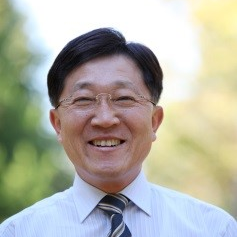Advance Electrode Materials for Perovskite Solar Cells and Electrochemical Supercapacitor
A special issue of Applied Sciences (ISSN 2076-3417). This special issue belongs to the section "Materials Science and Engineering".
Deadline for manuscript submissions: closed (31 December 2019) | Viewed by 27961
Special Issue Editor
2. Korea Basic Science Institute (KBSI), 169-148 Gwahak-ro, Yuseong-gu, Daejon 34133, Korea
Interests: perovskite solar cells (PSCs); organic solar cells (OSCs); dye-sensitized solar cells (DSSCs); supercapacitors; photocatalysts; sensors
Special Issues, Collections and Topics in MDPI journals
Special Issue Information
Dear Colleagues,
Advanced materials are receiving a great deal of interest in multidimensional applications and development because of their dominant role in science and technology. The aim of this Special Issue is to assess the current status and to identify the future priority and directions in research and applications of advanced materials without being limited to nanoparticles, nanocatalysts, nanoporous materials, nanocomposites, and nanofilms for solar energy and supercapacitor applications. The focus of this Special Issue will also be on the progress in the development of the synthesis of advanced materials through simple, straightforward, and facile techniques such as sol-gel, solid state reaction, chemical vapor deposition, and sonochemical, etc. This Special Issue will provide a platform and opportunity to disseminate and share information with world-class researchers working on advanced electrode materials for applications of perovskite solar cells and supercapacitors. We invite researchers, scientists, and technocrats in related fields to contribute their original research, reviews, and theoretical studies to cover the topic “Advance Electrode Materials for Perovskite Solar Cells and Electrochemical Supercapacitor”. It is our intension that this Special Issue will offer a unique glimpse of what has been achieved and what remains to be explored in advance electrode materials for perovskite solar cells and electrochemical supercapacitor. All manuscripts to be considered for publication in this section will undergo a rigorous peer-review process, and decisions are based on the recommendations of independent reviewers.
Prof. Hyung-Shik Shin
Guest Editor
Manuscript Submission Information
Manuscripts should be submitted online at www.mdpi.com by registering and logging in to this website. Once you are registered, click here to go to the submission form. Manuscripts can be submitted until the deadline. All submissions that pass pre-check are peer-reviewed. Accepted papers will be published continuously in the journal (as soon as accepted) and will be listed together on the special issue website. Research articles, review articles as well as short communications are invited. For planned papers, a title and short abstract (about 250 words) can be sent to the Editorial Office for assessment.
Submitted manuscripts should not have been published previously, nor be under consideration for publication elsewhere (except conference proceedings papers). All manuscripts are thoroughly refereed through a single-blind peer-review process. A guide for authors and other relevant information for submission of manuscripts is available on the Instructions for Authors page. Applied Sciences is an international peer-reviewed open access semimonthly journal published by MDPI.
Please visit the Instructions for Authors page before submitting a manuscript. The Article Processing Charge (APC) for publication in this open access journal is 2400 CHF (Swiss Francs). Submitted papers should be well formatted and use good English. Authors may use MDPI's English editing service prior to publication or during author revisions.
Keywords
- perovskite solar cells
- supercapacitors
- nanomaterials, nanocomposites
- electrodes
- metal oxides
- charge transporting materials
Benefits of Publishing in a Special Issue
- Ease of navigation: Grouping papers by topic helps scholars navigate broad scope journals more efficiently.
- Greater discoverability: Special Issues support the reach and impact of scientific research. Articles in Special Issues are more discoverable and cited more frequently.
- Expansion of research network: Special Issues facilitate connections among authors, fostering scientific collaborations.
- External promotion: Articles in Special Issues are often promoted through the journal's social media, increasing their visibility.
- Reprint: MDPI Books provides the opportunity to republish successful Special Issues in book format, both online and in print.
Further information on MDPI's Special Issue policies can be found here.





